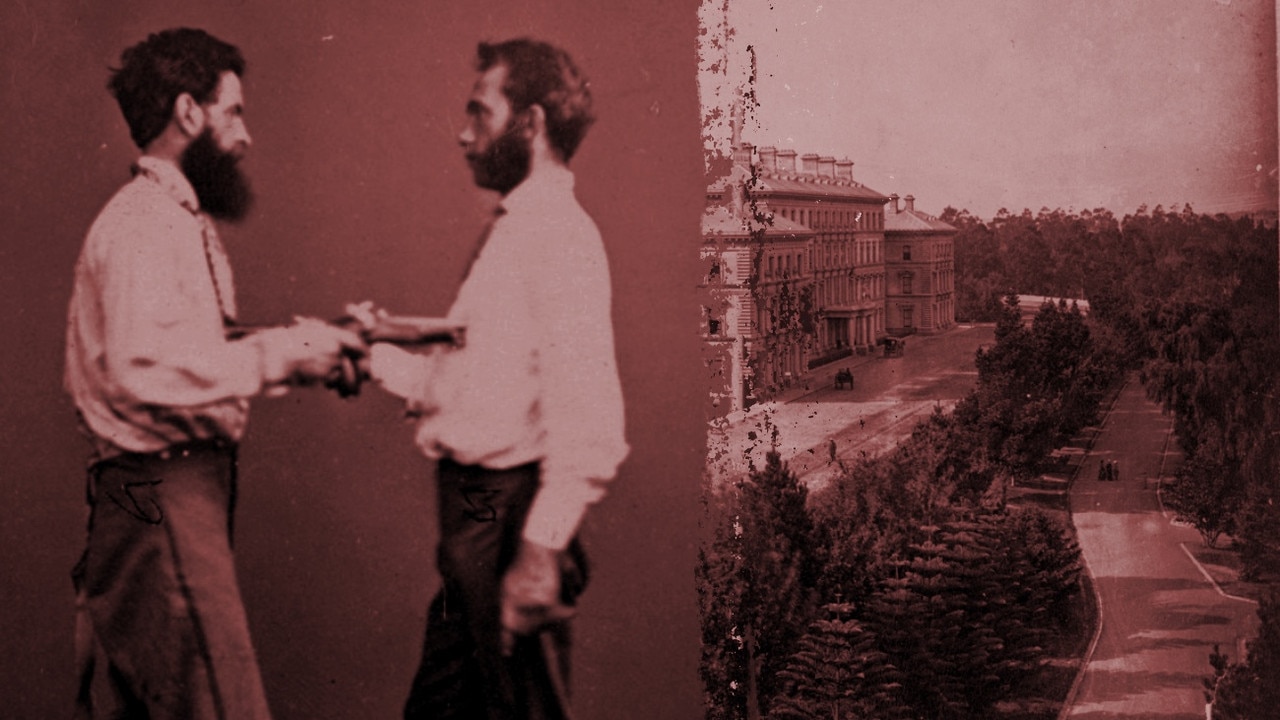1850s to today: How Melbourne’s historic pubs have changed over the years
YOU’VE probably had a drink at some of Melbourne’s oldest watering holes without even knowing it — places where Squizzy Taylor boozed and Mark Twain stayed.

Melbourne
Don't miss out on the headlines from Melbourne . Followed categories will be added to My News.
MELBURNIANS have always loved their pubs.
There are hundreds dotted across the city, from grand palatial buildings like the Young and Jackson to quaint hidden gems like the Mitre Tavern.
The city’s first pub was opened by one of Melbourne’s first settlers, John Pascoe Fawkner, on the corner of William Street and Flinders Lane in 1835.
Museum Victoria says the hotel patrons used to complain his pub only offered bad rum and river water to drink, with nothing to eat and nowhere to sleep.
Pubs dating back to Melbourne’s earliest days are still operating as hotels — albeit with a lick of paint and a few modifications.
Take a look how some of the city’s favourite watering holes looked back in the day and their more interesting clientele.
WHERE TO FIND VICTORIA’S SHIPWRECKS & SUNKEN TREASURES
Duke of Wellington — 146 Flinders St, Melbourne
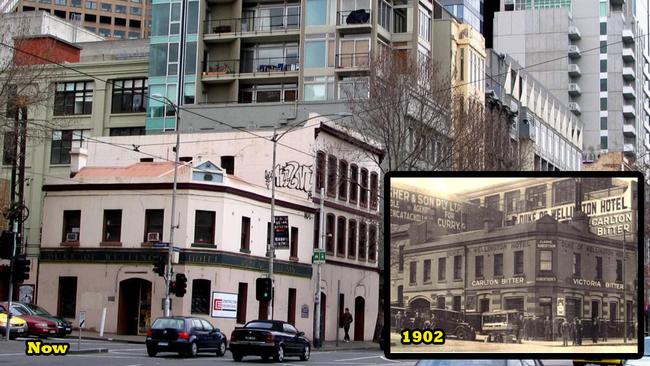
Built in 1850 and licensed in 1853, The Duke of Wellington is the oldest licensed pub in Melbourne and has traded for more than 160 years.
The hotel was named after Field Marshal Arthur Wellesley — aka the Duke of Wellington — who famously led the British forces to defeat Napoleon in the Battle of Waterloo in 1815.
The pub has had many colourful licensees, including football hero Brian ‘the Whale’ Roberts.
Young and Jackson — Corner of Flinders and Swanston Streets
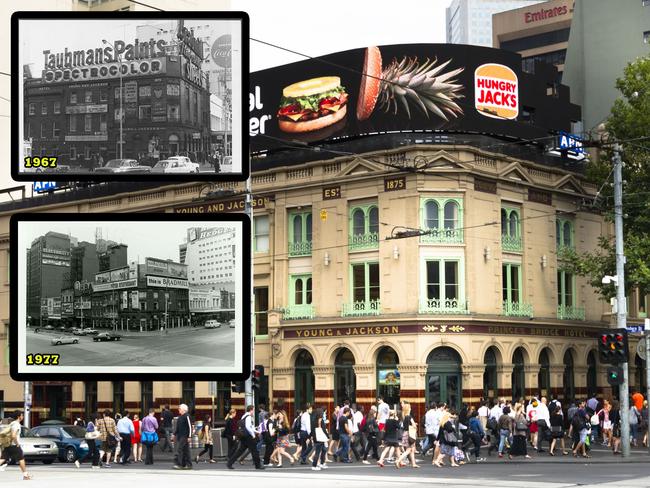
STAR ACTORS YOU NEVER KNEW CAME FROM MELBOURNE
The Young and Jackson is Melbourne’s most recognisable pub because it’s directly opposite Flinders Street Station on one of the busiest corner blocks in the city.
The site was purchased by John Batman in 1837 at Melbourne’s first Crown land sale, and he built a home for his children which became a schoolhouse in 1839.
The Princes Bridge Hotel opened on the site in July 1861, and the hotel was renamed the Young and Jackson after the Irish diggers who took it over in 1875 — Henry Young and Thomas Jackson.
The hotel is an amalgamation of five separate buildings, with the original 1853 bluestone building designed as a three-storey residence, with a butcher’s shop on the ground floor.
It was later extended in both directions, with all buildings rendered and painted to match each other by the 1920s.
The hotel is well known for the nude painting Chloé by French artist Jules Joseph Lefebre. It was purchased for 850 guineas by Dr Thomas Fitzgerald and hung in the National Gallery of Victoria in 1883, but it was withdrawn from exhibition three weeks later because it was deemed too risque.
It was bought for the Young and Jackson Hotel in 1908 for 800 pounds, and it has since been restored after an American serviceman threw a glass of beer at it in 1943.
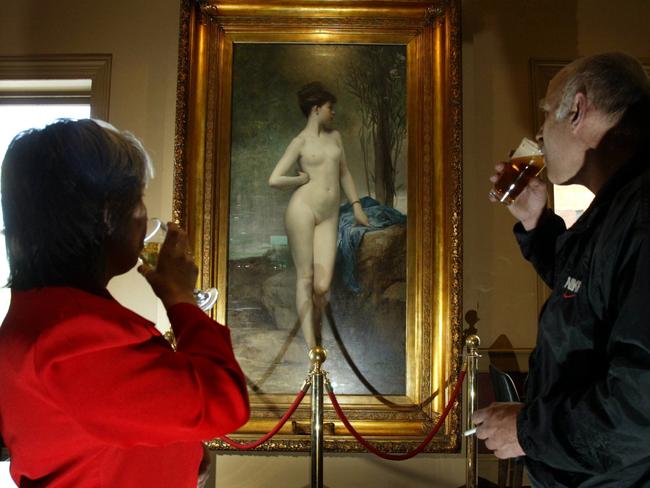
Balaclava Hotel — 123 Carlisle St, St Kilda
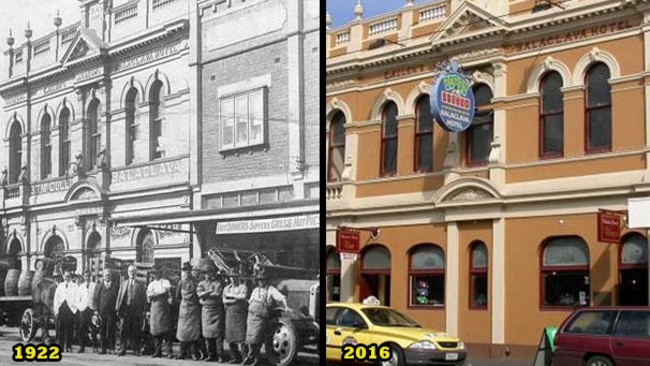
The Balaclava was a popular working class hotel for people who lived on the swampy Balaclava ‘flats’, as opposed to the ‘toffs’ who lived on the St Kilda hill, Becky Aizen from the St Kilda Historical Society says.
The current building exterior was constructed in 1887 and has remained almost unchanged in all that time, aside from new paint.
The swamps have since been turned into ritzy suburbs but the little pub remains, now servicing a clientele that likes to play the pokies after they tuck into their pub grub.
Albert Park Hotel — 83 Dundas Place, Albert Park
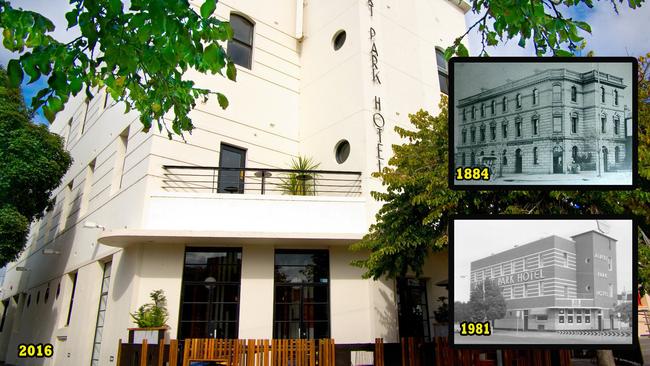
Thomas and Margaret Walsh opened the Albert Park Hotel in 1883 and it was advertised as a place that: “Private families, or single gentlemen who may desire a residence near the city, will find the accommodation in every way satisfactory,” St Kilda Historical Society says.
Like other large hotels built under new licensing regulations, the Albert Park concentrated on providing accommodation in favour of a bar trade.
And being some distance from the beach front, it aimed to attract a city-based clientele rather than those looking for a beachside break.
The nineteenth century Victorian building was renovated during the 1930s in the current modernist style — with stunning porthole windows.
Mac’s Hotel — 34 Franklin St, Melbourne

Looking more like a bush pub than an inner-city watering hole, Mac’s Hotel is one of the oldest hotels in Melbourne still operating under its original name.
Construction of the pub was started in 1953 and it’s licence was granted in 1855 — serving as both a hotel and a coach terminal for people departing for Victoria’s goldfields.
Trans-Australia Airlines bought the hotel in 1970 hoping to extend its adjacent offices, but the National Trust stepped in and prevented the hotel’s relocation.
The two-storey bluestone building has been through a few renovations, with the veranda added 1914 and a full exterior restoration done in 1981.
Village Belle Hotel — 202 Barkly St, St Kilda
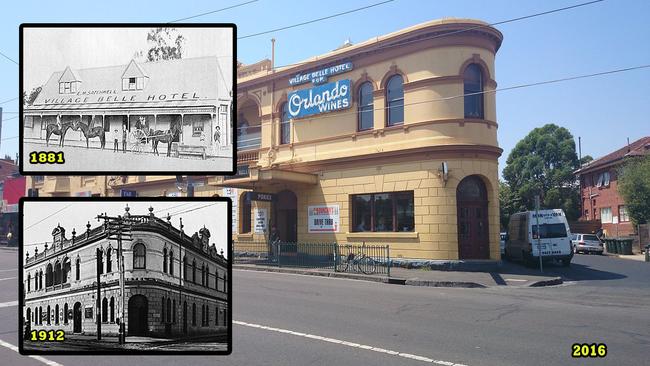
Dating back to 1891, the Village Belle was so deeply embedded in the local consciousness that the area surrounding the hotel became known as the Village Belle precinct.
Located opposite St Kilda’s famed Acland Street, the hotel was a meeting place for many Melburnians, with gangster Squizzy Taylor regularly drinking at the hotel.
The Village Belle was the last stopping point before the Elwood swamps.
Elephant and Wheelbarrow St Kilda — 169 Fitzroy St, St Kilda
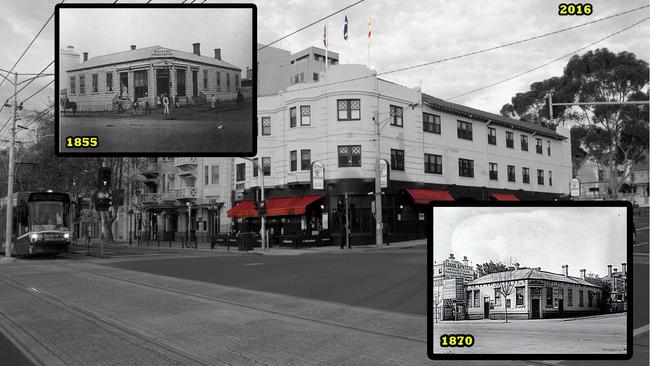
Opened in 1854, this hotel began its life as the European Hotel — a simple, single storey timber building.
A new licensee changed the name to the British Family Hotel in 1855, and it originally advertised itself as a family inn.
The hotel was renamed the Victoria Hotel in 1863 and then the Queensland Hotel from 1881 until 1887, when it became the Cricket Club Hotel.
In 1970, entrepreneur Sammy Lee brought the famous Sydney drag troupe, Les Girls, to perform at the hotel — which was at that stage known as the Ritz.
It was the first official drag performance ever staged in Melbourne and their arrival caused a sensation.
Because they were officially classified as male, the performers required police permits to appear in female attire while travelling to the show — and they were forbidden to ‘be on the street’ dressed as women.
In 1999, The Elephant & Wheelbarrow replaced the Ritz — and it is now popular with backpackers, who can stay at the hostel above the pub.
Esplanade Hotel — 11 The Esplanade, St Kilda

The Esplanade Hotel, or The Espy, is one of the most recognisable landmarks in St Kilda and one of the most famous pubs in the city.
The New Bath Hotel opened on the site in 1856 but it was demolished in the 1860s — with nothing notable on the land for the next 18 years.
A new building, completed in 1878 and altered in 1921, was designed by Smith & Johnson (who designed Melbourne’s Law Courts), which became the most prominent 19th century resort hotel in Victoria.
The site was sold to James Orkney in 1877, who commissioned Smith and Johnston to construct a row of terrace houses — but he was eventually persuaded to change his plans and erect a large hotel instead.
The Esplanade Hotel was opened in January 1878 and it became the permanent home for 30 to 80 people right up until the 1950s — reputedly also hosting celebrities such as Mark Twain and Sarah Bernhardt.
The hotel is the longest continuously running live music venue in Australia (although it is currently closed for extensive renovations.)
Mitre Tavern — 5-9 Bank Pl, Melbourne
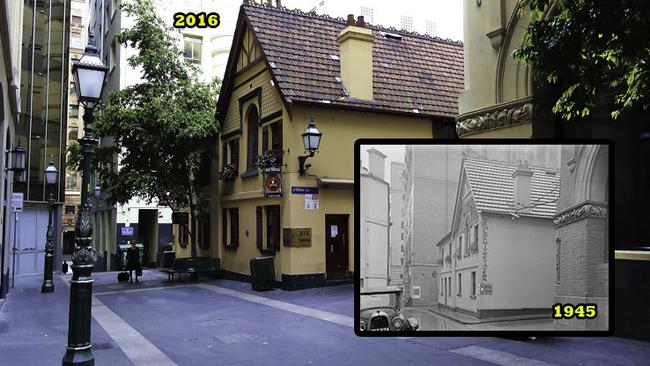
The Mitre Tavern was built in 1839 and is one of the oldest buildings in Melbourne.
Mr Henry Thompson became the first of many publicans at the Mitre Tavern in 1868 and it has remained a pub for nearly 140 years.
The little tavern stayed as the city grew around it, and in 1930 it was bought by the Royal Insurance Company, which planned to demolish it to extend their Collins Street building.
Thankfully the company had a change of heart and decided to leave the pub standing.

